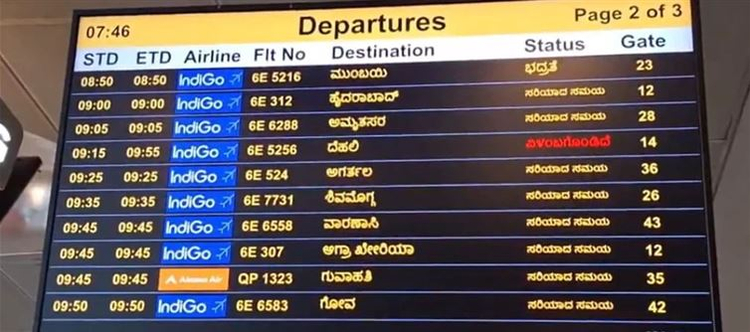
A user wrote, "Do you think only those who know english and kannada visit Bengaluru? Not having hindi at metro station is understandable, but it has to be there at the airport and railway station."
"On one hand, the dubai Crown prince shows respect for india by tweeting in hindi, while on the other, some of our own citizens disparage our own hindi language, despite it being one of the most widely spoken in the world," another user wrote.
"As much as I resist hindi imposition, removing hindi from travel hubs like Airports and railway stations is stupidity. These places should help travellers and not punish them," a user wrote.
At Kempegowda international airport in Bengaluru, the recent removal of hindi from wallet PLATFORM' target='_blank' title='digital-Latest Updates, Photos, Videos are a click away, CLICK NOW'>digital display boards has sparked widespread attention and debate. The airport, which now features signs solely in kannada and english, reflects a significant shift in linguistic policy aimed at prioritizing regional and international languages over Hindi.
This move aligns with the sentiments of many locals who have long resisted what they perceive as the imposition of hindi in non-Hindi speaking states. The use of kannada, the official language of Karnataka, alongside english, ensures accessibility for both local citizens and international travelers while reinforcing the cultural and linguistic identity of the region.
The decision to exclude hindi has been widely supported by sections of the Kannada-speaking community, who argue that language imposition undermines the federal structure of india and marginalizes regional cultures. Over the years, resistance to hindi imposition has been a recurring issue in southern states like Karnataka, tamil Nadu, and Kerala.
In this context, the move by Kempegowda international airport is seen not just as a logistical or practical decision but also as a symbolic stand for linguistic self-respect and cultural assertion. It emphasizes the importance of local language preservation in a multilingual country, while also reigniting the broader conversation about language policy and representation across public spaces in India.




 click and follow Indiaherald WhatsApp channel
click and follow Indiaherald WhatsApp channel